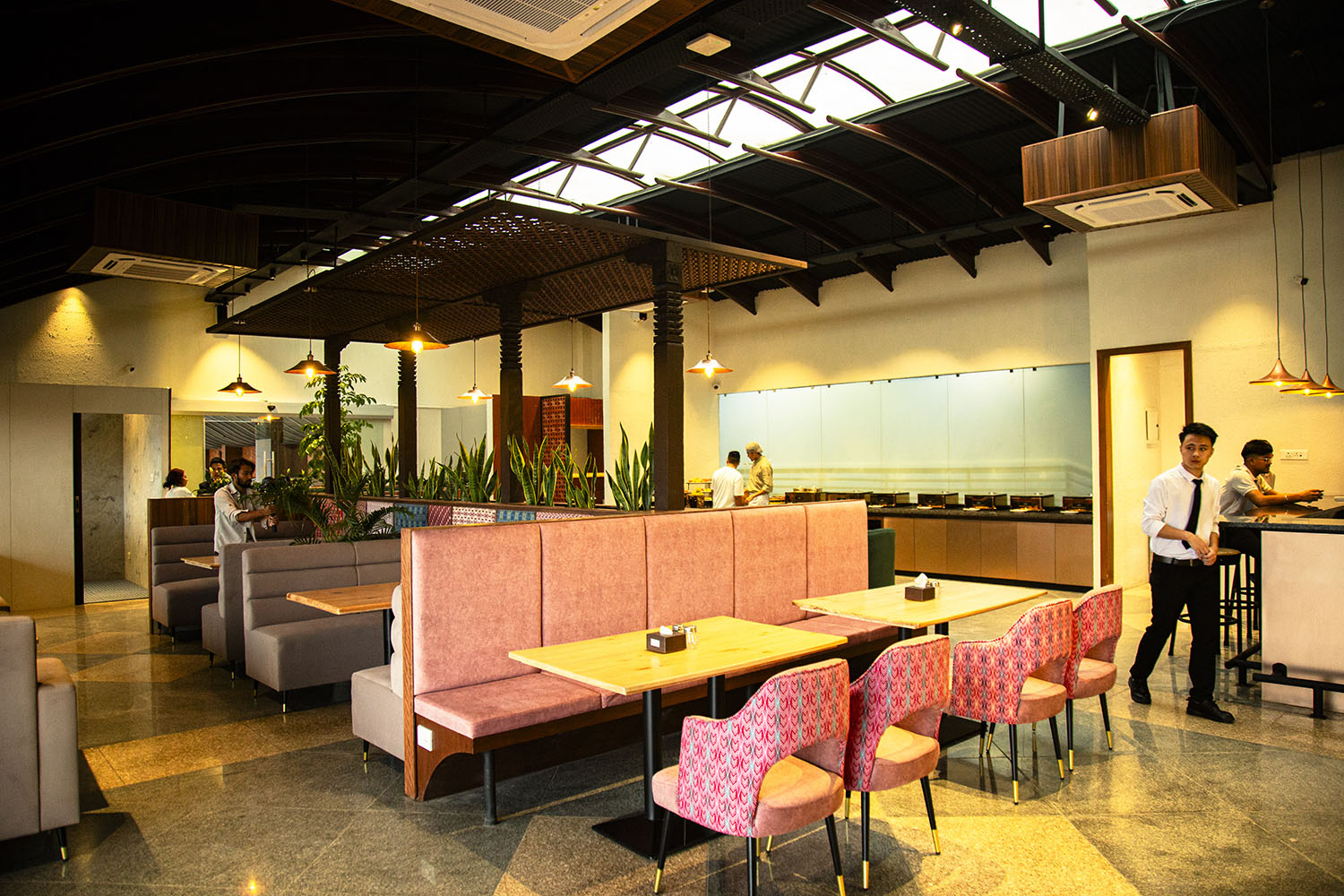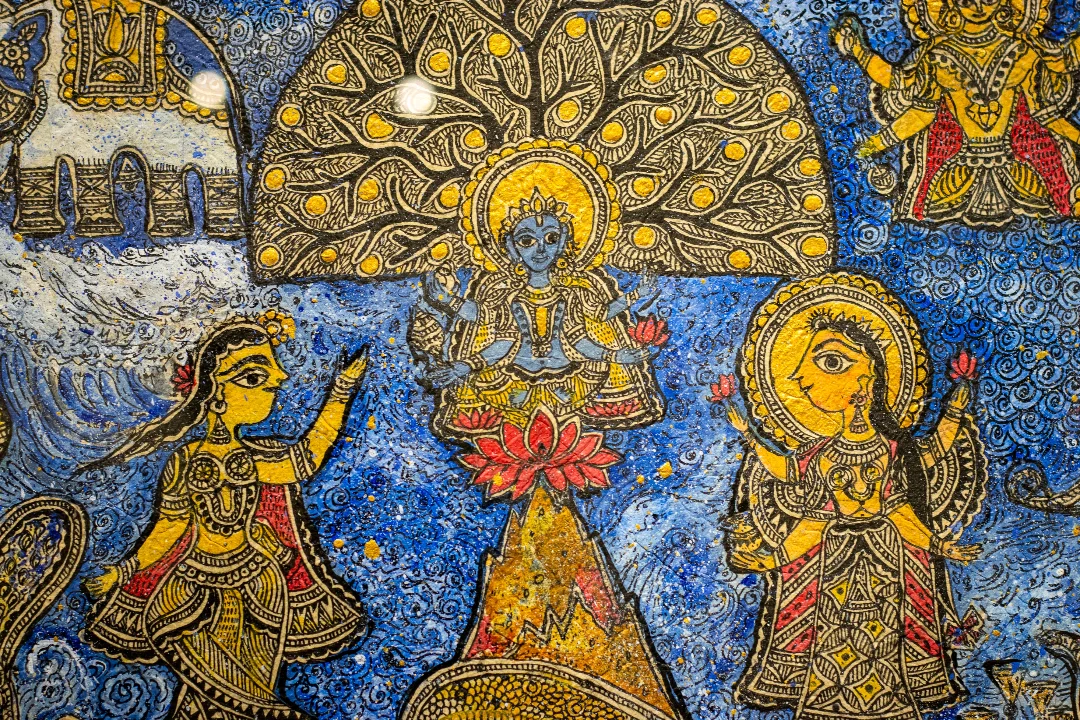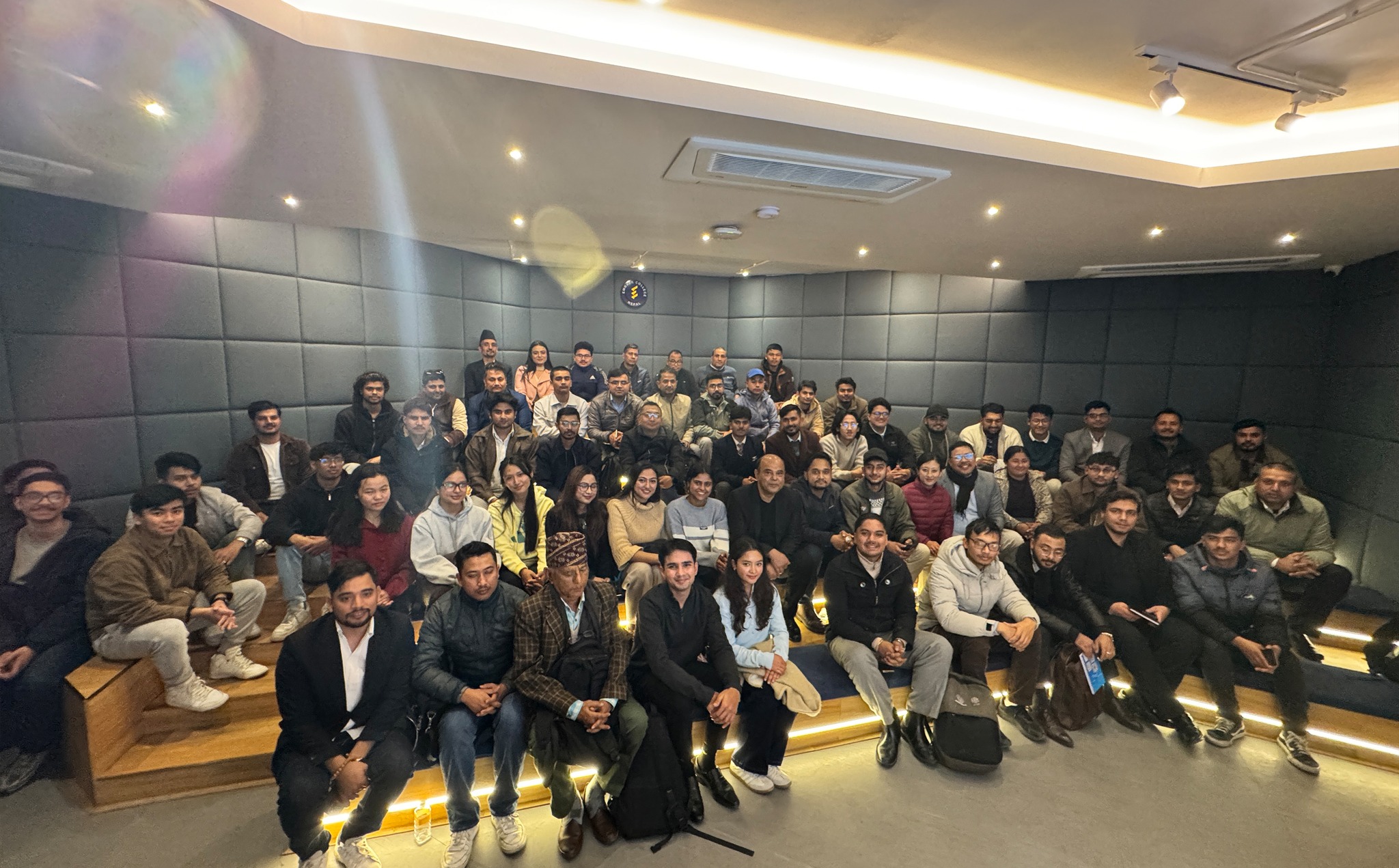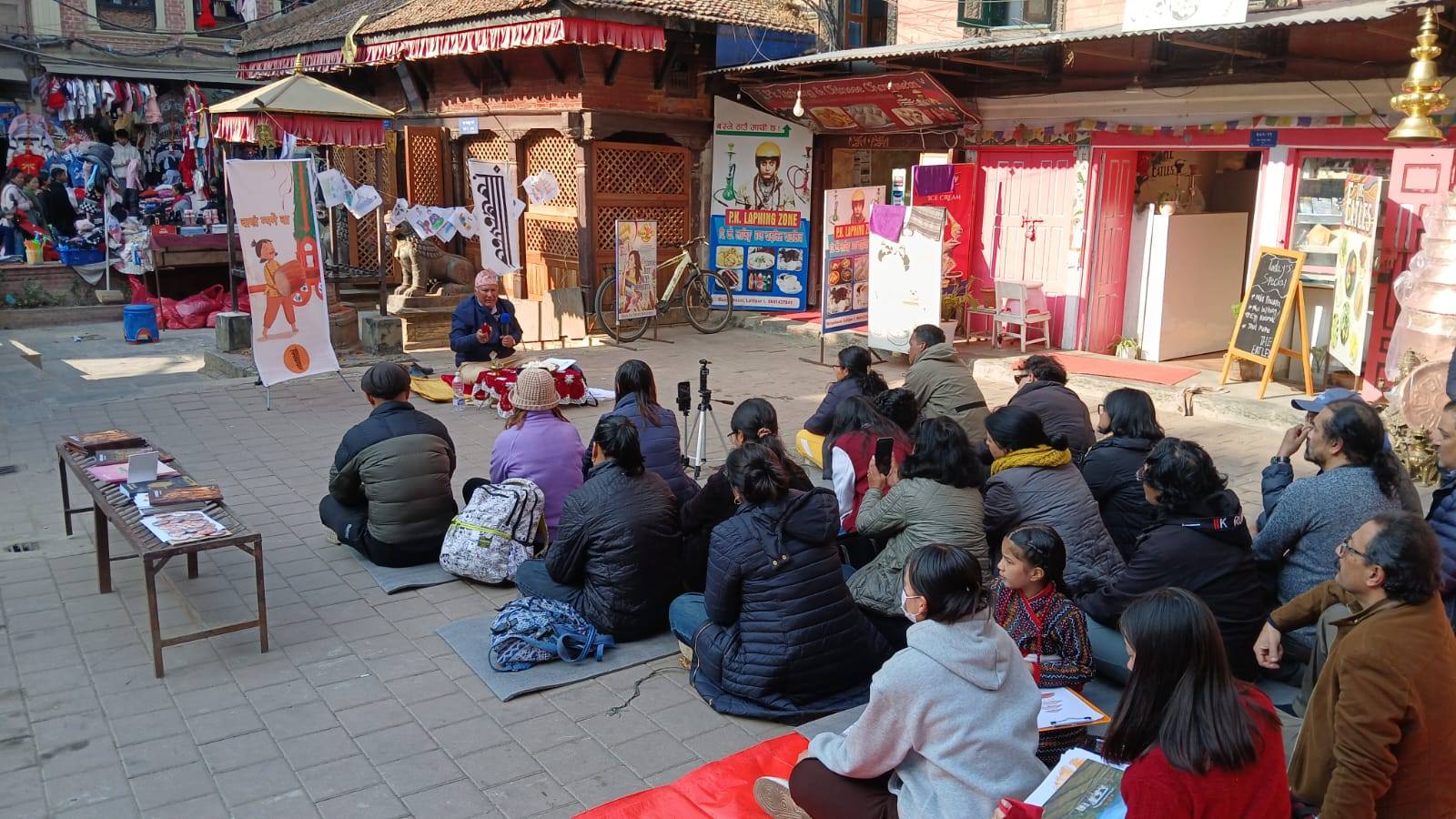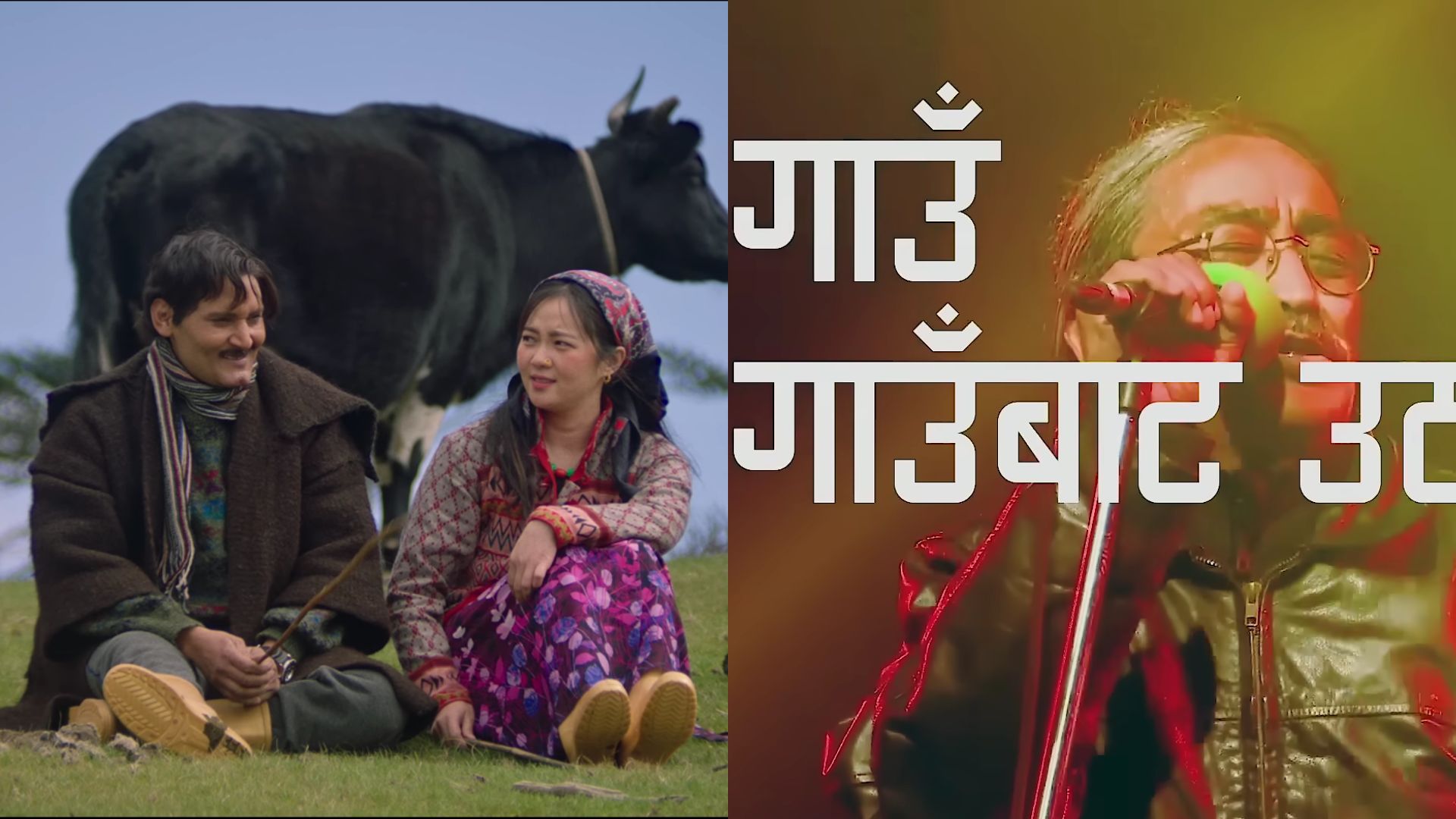Culture & Lifestyle
Discarding age-old taboos, more Nepalis are eating pork
Once explicitly forbidden for these ‘upper castes’, pork has started to become a new favourite, reflecting changing attitudes and more cosmopolitan approach to the variety of cuisines available in the Kathmandu Valley, brought in by migrants from across the country.
Thomas Heaton
Nakhipot in the south of Kathmandu really only comes to life around 4pm. The intoxicating smell of pork sekuwa wafts through the air, luring people from all around. Succulent pieces of pork, marinated and fire-roasted, are washed down with flagons of tongba.
Nakhipot is famed for its Dharane kaalo bangur, the black-haired pig that hails from the eastern city of Dharan, prized for its meat by the Limbu and Rai communities. Most of the people eating at Nakhipot’s numerous restaurants, however, are not Limbu or Rai. Manu Hangma Limbu, who sells the pork, chuckles when asked which community orders her sekuwa most. “Chettri and Bahun,” she says nervously, but without hesitation.
Once explicitly forbidden for these ‘upper castes’, pork has started to become a new favourite, reflecting changing attitudes and more cosmopolitan approach to the variety of cuisines available in the Kathmandu Valley, brought in by migrants from across the country.
The pig has long been inextricably linked to Nepal’s indigenous communities--their culture, religion and food habits. For Limbus, and certain Rai and Tharu communities, the pig is at the top of the pecking order when it comes to meat consumption; it is used as prasad and is traditionally part of a groom’s bride price.
However, for Bahuns and Chettris, Nepal’s first general code, the 1854 Muluki Ain, explicitly forbade pig, or pork, meat; it was restricted to the so-called ‘matwalis’ or alcohol-drinking castes, namely the indigenous communities. The only form of swine allowed to these ‘upper castes’ was the wild boar.
But as Nakhipot shows in a microcosm, pork has become a culinary delight for many who once refrained because of cultural, religious or legal proscriptions. And serving up pork to these neophytes are those very indigenous communities, like Limbus, Rais and Tharus.

Pork as part of culture
Many Tharu communities hold pork in the same regard as Limbus--a festival is not complete unless a pig is slaughtered. Pork meat is central to the feast, says journalist and researcher Krishna Raj Sarbahari. The pig is as important to some Tharus as buffaloes are to the Newars, he says.
Before the 1990 people’s movement, Tharus avoided consuming pork in public, says Sarbahari. “Upper-caste people might’ve seen them, and then they might not have looked at them as equals,” he says.
There was a shame associated with the choice of meat, because the community believed it was looked down upon by upper castes. “They thought ‘we have to elevate ourselves’, on par with so-called upper-class people. So they would not eat it outside, but would eat in their own homes,” says Sarbahari.
The 1990 movement, however, led people to have conversations about their identity, which meant the Tharu communities began to embrace the meat even outside the home.
“Earlier Tharu people had pigs at homes, just to eat but not to sell. But now people are taking pigs to sell. Since upper-caste people too started farming commercially, they also ended up eating the product,” says Sarbahari.
And so, with the increased demand for porcine products, Tharu communities began establishing their home stays.
Families typically keep pigs at home, fattening them up for their own consumption, but more recently, they’ve begun selling the meat through homestays that have become popular with tourists, both local and foreign.
“The function of homestays is for people from other classes, as non-Tharus, to be able to eat pork, which they can’t cook in their own homes,” says Sarbahari. “It’s become a commercial thing now.”
Pork was intrinsic to the identities of communities like Tharus and Limbus, which is why the 1854 Muluki Ain sought to demarcate who could and couldn’t eat pork. The general code defined how certain castes should function, says Dambar Chemjong, head of Tribhhuvan University’s Anthropology Department. It was not just about who they could marry and how they should behave. Eating and drinking habits featured heavily into how Nepal’s indigenous communities were incorporated into the orthodox Hindu caste hierarchy. Some castes were classified as matwali, in relation to whether they consumed alcohol or not.
“What kind of foods are sacred to us, and what is considered defiling, is an interesting issue,” says Chemjong. “Pork is defiling and unacceptable for many societies and cultures -- Muslims, Jews, some Hindus.”
While the Tharu community may have briefly encountered an identity crisis, pigs have always been entrenched in Limbu culture.
“For Limbus particularly, speaking as one myself, we prefer pork over buffalo, goat and chicken. Symbolically, the importance of the pig is not only in consuming the meat, but also about offering pork to deities and divinities,” says Chemjong.
Limbu culture traditionally calls for pigs to be slaughtered in the presence of a phedangma, a Limbu priest, who offers the animals to certain deities and gods. The pork is then taken as phakso, consumed by the people.
But as early as 1957, there was a ready demand for pork, leading the UK to bolster Nepal’s porcine population with foreign aid, according to the Biodiversity journal article ‘Farming and biodiversity of indigenous pigs in Nepal’ by researchers from the University of Sydney. The UK brought into Nepal exotic breeds, including the Yorkshire white, landrace, Hampshire, and duroc. Those breeds are known for growing quickly and yielding larger quantities of meat, while native breeds, such as the chwanche, bampudke, and hurrah, are usually smaller.
The Limbu community rejected these foreign pigs at first, says Chemjong, because it wondered whether local deities would recognise the animals as offerings. For Limbus, black pigs are the only breedacceptable to offer to the gods. But they found a clever solution.
“The pigs had white hair, so Limbus crossbred the animals to get varieties of pigs with black hair,” says Chemjong.

Pig prohibitions
Even after the Muluki Ain was changed in 1963, habits remained. Folklorist Kesar Lall’s 1976 book Nepalese Customs and Manners states: “Many people do not take the pig. Wild boar is a delicacy to some, while others will not touch it.” He continues to say that people must wash after touching the animal.
Pigs were considered filthy animals by the ‘upper castes’ and avoided, but wild boar were paradoxically held in higher regard. Hunting and serving of wild boar, bandel, was considered a luxurious pursuit across society, but particularly among the Chhetri and Thakuri elite.
The health worries people had were not unfounded, however, as increased production and increased rates of tapeworm came hand-in-hand. Consumption of pork not prepared properly can carry the parasite and can lead to serious health problems.
Sagar SJB Rana grew up with brothers who loved to hunt wild boar, among other wild animals. Rana himself refrained, however. The author of Singha Durbar: Rise and Fall of the Rana Regime of Nepal,Rana believes the change in attitudes towards pork among Chettri and Bahun communities comes down to the animal’s perceived cleanliness.
“Bandel is wild, compared to pigs from urban areas. The bandel was seen as cleaner and more pure, so I think that was the main reason that we did eat it--and relished it,” he says.
In fact, the bandel was so prized, it was once at risk because of overhunting. That led to the government implementing various policies to protect the animals in 2003, which made the bandel a farm animal and wild boar hunting illegal, requiring a hunting licence.
Pigs were considered unclean and impure, but there were no real religious reasons for abstinence, says Rana. “It was even forbidden to eat chicken, but we ate jungle fowl,” he says. “I can’t say that was because chicken was dirty, because in the same castes, on the Indian mainland, it was the opposite.” Bahun and Chettri communities in India would not eat duck--something Bahun and Chettris in Nepal could eat--but would eat chicken, says Rana.
Things have changed drastically since then, as chicken is widely accepted across Nepal, with no prohibitions, cultural, religious or legal, against the fowl.
Rana, who went to school in England, admits to eating pork, even if he refrained from beef, which is explicitly--socially, culturally and religiously--forbidden for all Hindus, not just upper caste.
Even with the consumption of pork becoming more prevalent, cooking it at home in high-caste family kitchens remains taboo.
“They will be eating chicken and mutton at home, but pork is not allowed,” says Sarbahari. “Because society is mixed now, even at Tharu wedding functions Tharus serve everyone pig.”
For chef Govinda Narsingh KC, who started working in 1977, the prohibition on pork never applied to his professional life.
“We couldn’t say we were Brahmin or Chettri, because we were chefs,” says KC. “We had to be professional so we couldn’t let those things come in between our work. So we eat it.”
KC got his first taste of pork almost immediately on becoming a chef. Having grown up as a relatively conservative Brahmin, he was overwhelmed by how tender and juicy the meat was, and immediately became a fan, he says. KC, however, never told his parents, and his parents never asked.
At home, however, pork was, and still is, never cooked in his personal kitchen or eaten at home. Bandel is totally fine, he says.
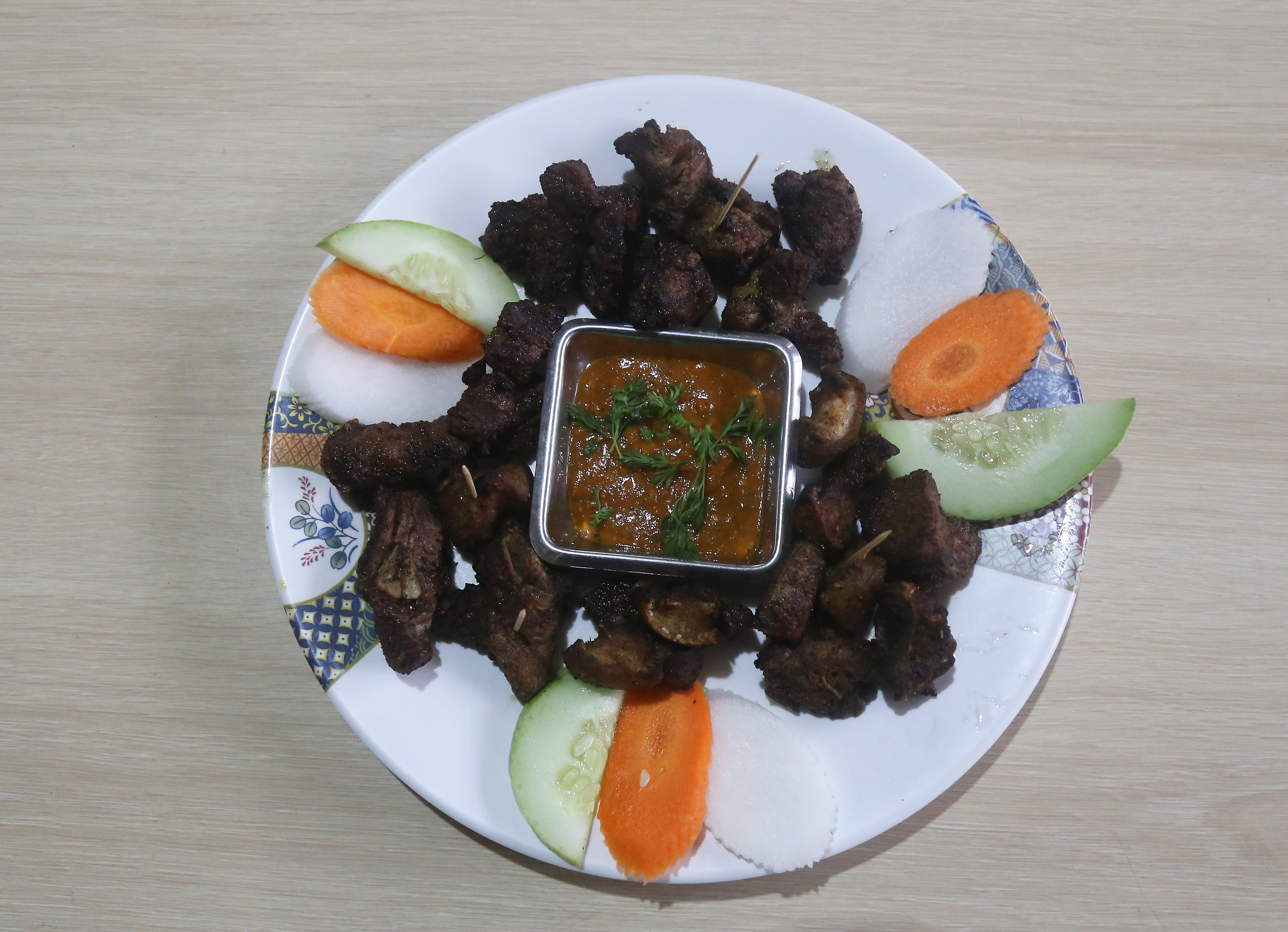
Changing with the times
While the kitchen is still a no-go for many wanting to eat pig, the consumption of pork is spreading throughout society--not just in those communities that hold it dear. The production of pork in Nepal has increased--from 16,453 metric tonnes of meat in 2006-2007 to 24,535 tonnes in 2016/2017. This might not be a dramatic increase but it shows that more pork is being consumed. In 2017, roughly 1.16 million pigs were raised commercially across the country, with most still being confined to the east.
According to one report, 7 percent of the meat market in Kathmandu last year was pork, behind buffalo--the most popular meat--mutton and chicken. So while demand might be rising and production increasing, most of Kathmandu still seems to prefer the trifecta of chicken, mutton and buff to pork.
However, things are slightly different in Pokhara, another bustling metropolitan city. The demand for pork surged by 30 percent last year alone, according to a Post report. Daily pork production in Pokhara of around 3,000 kg was not meeting demands of over 4,000 kg, according to Pokhara Livestock. Pig keepers too attributed this rise in demand to the breaking of cultural taboos.
Chemjong too believes that this is a sign of social transformation, with an increasingly liberal population growing up and moving on from traditional constraints that may not make sense in modern society. “With a neo-liberal market comes liberal thinking,” he says. “We are trying to be more liberal as individual citizens.”
Old taboos concerning food and eating habits are being overturned in cities, where different castes, traditions, cultures and classes are forced to bump into each other, say farmers and consumers of pork. The upper castes were even forbidden from eating buffalo meat, prized by the Newars. Now, Chettris and Brahmins may love buff even more than Newars, says KC.
“Brahmin and Chettri people are becoming more lenient when it comes to eating,” he says.
Prasantha Khanal, co-founder of the Patan restaurant Raithaane, says he believes the bumping of cultures is more of a convergence. Khanal, for example, never ate pork growing up, but the mixture of backgrounds in his friend circle led him to try it.
With the diversification of cultures in Kathmandu Valley came an increase in restaurants serving pork, and the mixing of friends’ groups like his. “A lot of people started eating pork and buff that way,” says Khanal. It’s not uncommon for groups of friends to find their way to the Nakhipot area, specifically to eat pork. One only has to visit Nakhipot in the evening to find groups of young people of different backgrounds, sitting together and enjoying pork sekuwa.
KC, however, continues to believe that pork is a relatively unhygienic meat--he mainly ate imported pork at his place of work--and does not see it moving into the kind of prevalence chicken enjoys.
But that’s one man’s opinion and others tend to disagree. Avinav Sharma, also a Brahmin, sees things differently. Sharma believes that soon, pork consumption will follow chicken.
“The only meat allowed in my grandparents’ kitchen was mutton,” says Sharma, who first tasted pork in his final years of school. “By the time it came to my parents, the chicken taboo no longer existed.”
Sharma had never tasted pork at home, only the boar that his mother cooked. Even while young, he found the acceptance of bandel over pork “quite strange”, he says. However, as he started eating out with friends, he began to try pork, and his parents were not upset over it.
“I know of friends whose parents got really offended when they discovered their kids had tried pork,” says Sharma. “I also have a few friends who don’t eat pork at all, but most don’t have a problem with it.” Those friends primarily abstain because they were brought up that way, he says.
Now 32, Sharma eats pork regularly and his parents are not upset at his consumption of pork. He still does not eat it at home, but he believes that it is only a matter of time before pork becomes as ubiquitous as the chicken.
As for the porcine taboo, “it will start disappearing from this generation,” he says.




 14.83°C Kathmandu
14.83°C Kathmandu
